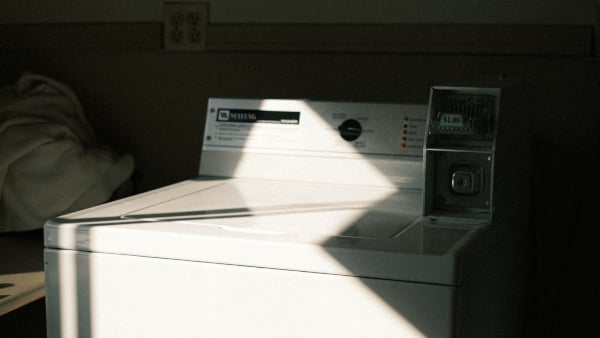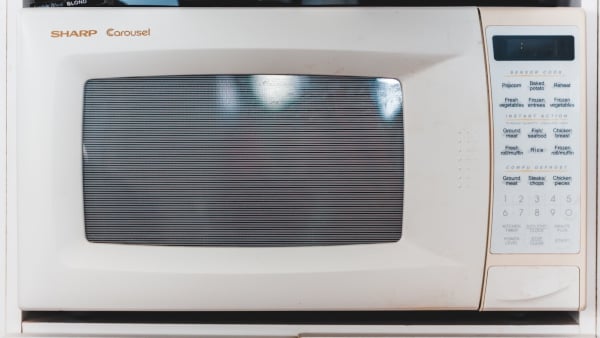 Over the years, home appliances have evolved into something that most people cannot live without. They have become a natural part of everyday life. Many people, however, are blissfully unaware of the defective nature of the home appliances they use. As a result, consumers run the risk of getting hurt in accidents involving broken appliances. In most cases, following the manufacturer's recommendations and using common sense will ensure that you can avoid accidents and that no significant problems ever happen.
Over the years, home appliances have evolved into something that most people cannot live without. They have become a natural part of everyday life. Many people, however, are blissfully unaware of the defective nature of the home appliances they use. As a result, consumers run the risk of getting hurt in accidents involving broken appliances. In most cases, following the manufacturer's recommendations and using common sense will ensure that you can avoid accidents and that no significant problems ever happen.
However, when home appliances fail, standard safety procedures are often insufficient. According to the Consumer Product Safety Commission's 2021 report, an annual average of 900 injuries occur due to product or appliance instability.
For this reason, manufacturers have had to recall more than seven million dishwashers and eight million other devices over the years. As a result, it is critical understand the dangers that these appliances pose. By looking at how previous products failed, we can get to the root causes of what led to those defects, and manufacturers will be able to ensure the safety of their products through iterative improvements.
How Household Appliances Cause Damages
As we've already mentioned, defective or malfunctioning home appliances might lead to injuries and even fatalities. These injuries may result from flaws in the product's design, a faulty manufacturing process, or cheap materials. When it comes to injuries caused by faulty appliances, they can range from minor cuts to severe burns and scarring. This will, of course, depend on the appliance in question. Needless to say, it is the manufacturers’ responsibility to manufacture quality home appliances, avoid potential hazards, and ensure the safety of end customers.
Below we gathered some defects found on common home appliances for your reference:
1. Washers and Dryers
The majority of injuries that washers and dryers can cause are in the form of burns. These incidents usually happen because the dryer or the washer is not correctly installed or maintained. However, there are times when the dryer itself is flawed. This could be the result of subpar manufacturing. When lint collectors and dryer exhaust ducts are not working correctly, they can increase the danger of fire and burns. Experts from fourwinds-ksa.com claim that more and more homes are installing these appliances, which could lead to an increase in the number of accidents.
2. Space Heaters
Almost everyone who has used a space heater in the past has been aware of the fire hazard associated with it. However, space heaters are much more dangerous than most people believe. Space heaters pose an exceptionally high risk to users, especially if left unattended. If you place these appliances too close to flammables like clothes, furniture, or bedding, it won't take long for them to catch fire. In addition, some space heaters may release unsafe levels of carbon monoxide into the air. This means that constant ventilation is necessary for safe use. Furthermore, gas and kerosene heaters release harmful pollutants and are not safe to use indoors. A fire could break out if you placed a space heater on a high shelf or table, where it could fall or cause an overload in the electrical system.

People underestimate the dangers of space heaters.
3. Stoves and Ovens
Like space heaters, defective stoves and ovens can burn users or emit dangerous carbon monoxide fumes. These dangerous and potentially deadly hazards can lead to severe injury or death. People, unfortunately, place far too much trust in their ovens. As a result, they tend to be a little more callous when using them, which can often lead to problems. Therefore, manufacturers must ensure that these appliances have all of the necessary failsafe to prevent any harm from occurring to their customers. To make this possible, we need both quality control and quality assurance.
4. Countertop Appliances
Even a small appliance, such as a toaster or a microwave, can cause injuries. Small kitchen appliances, such as these, can cause fires. They may also have electrical flaws that pose a significant risk to people and their homes. Aside from the appliances we've mentioned above, any other items most people have in their house, such as your refrigerator, gas grill, or dishwasher, might be harmful if it's defective.

Microwaves are a fire hazard as well as an electrical hazard.
Manufacturers' Obligations
Companies that make or sell parts for appliances must release reasonably safe products for consumers. They may be liable for any damage caused by a faulty household appliance. This applies whether or not you are aware that your product is defective. As a manufacturer, you must take every precaution to ensure the safety of your products. That being said, if your product is inherently dangerous, such as a space heater, you must provide adequate instructions or warnings about potential dangers or harmful applications.
What to do if the household appliances you manufactured are defective
The first thing you can do if you realize you are manufacturing defective home appliances is to stop production. Depending on the severity of the defect, you may even need to recall the product. This means that you may need to, in some way, compensate the customers that have already bought your product. You may offer them a replacement appliance, a replacement component, a service, or a refund. Not to mention your brand reputation will be affected by the recall.
Want to avoid defects before your product is available on the market? Work with third-party quality control providers to conduct quality inspections to identify defects and fix them before you ship out your goods.
What Customers Can Do if They Are Injured by Defective Household Appliances
If customers suffer an injury as a result of a defective household appliance, they have a few options at their disposal. They can report the issue and the defect and request compensation. However, if the injury is severe, they can also pursue legal action. They can file a product liability claim. "Product liability" is the legal doctrine that allows consumers to sue manufacturers for injuries caused by defective products. It is a way for consumers to hold manufacturers accountable for their negligence and carelessness. If the manufacturer refuses to settle the case, the customer may decide to take the manufacturer to court. This can be expensive and time-consuming for both the manufacturer and the customer.
 If your appliances cause injury, you could face legal consequences.
If your appliances cause injury, you could face legal consequences.
Conclusion
People rarely consider the dangers of defective household appliances even though they happen as often as they do. Customers tend to choose brands with a good reputation and quality products and avoid brands with recall cases. Thus, as a brand or manufacturer, it's your responsibility to manufacture quality products with a safe user experience.
In brief, Simply pointing out the warning signs users should look for will make your product safer. But in general, conducting quality control during the manufacturing process, detecting any defects in advance, and reworking the defective items are the fundamental methods to ensure product safety and brand image.







